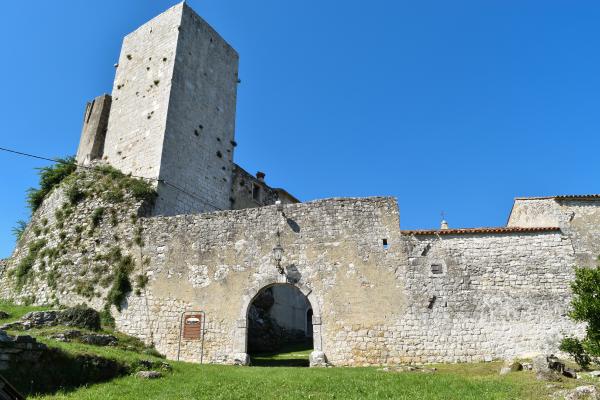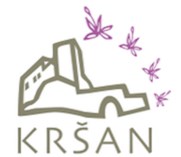Kršan Castle
Kršan Castle

Like this article?
Recommend it to your friends through these services..
Kršan castle is one of the best-preserved Istrian castles and is located on top of a hill surrounded by defensive walls in an oval shape. It was mentioned in historical documents for the first time in 1274 as the property of the patriarchs of Aquileia (Castrum Carsah), and from the beginning of the 13th to the 17th century it was the seat of the feudal estate of the Karscheyner family. At the beginning of the 14th century, Henrik of Pazin appeared as the lord of half of Kršan. The arrowhead from Henrik's coat of arms still stands out today as the Municipality of Kršan’s coat of arms.
From the 17th century, the castle changed owners several times until the beginning of the 20th century. The castle is in the corner of the fortified settlement of Kršan. From the medieval castle, a quadrangular tower has been preserved, built of finely carved rectangular stone blocks, which was once accessed through a semi-circular closed door. The rest of the defensive and residential part of the castle was rebuilt in the 18th and 19th centuries. In the inner courtyard, the frame of the 15th century Gothic portal and the mouth of the well from the 17th century have been preserved. A transcript of the Istrian Demarcation from 1546 was found in the castle, as well as a set of legal documents that testify to Istrian and Croatian literacy in the area. This valuable historical and legal document was published in 1852 by Ivan Kukuljević Sakcinski, and was transcribed into Latin and prepared for printing by Dr. Ante Starčević, who later became a prominent Croatian politician.
The last owner of the castle was Giovanni Tonetti, better known as the Red Baron, who supported the miners during the Labin Republic and fought against the fascist authorities during the Second World War.
The town is entered on the eastern side through the completely preserved town gate, and on the right side a row of houses lean against the town defensive wall. On the ground floor there is a loggia whose two walls are open with semi-circular arches, while on the first floor a fontik (storage) for tithes and other contributions was situated. Through the Guardian of Istrian Demarcation – Kršan Castle project, the revitalization of the cultural monument and putting tourism into function through the touristification of services with additional attractive contents that present the heritage is planned. The goal of the project is the activation of the historical core of the old town of Kršan, along with the creation of tourist services and the preservation of its cultural heritage. Even today, the castle attracts visitors with its enchanting beauty, standing the test of time.
